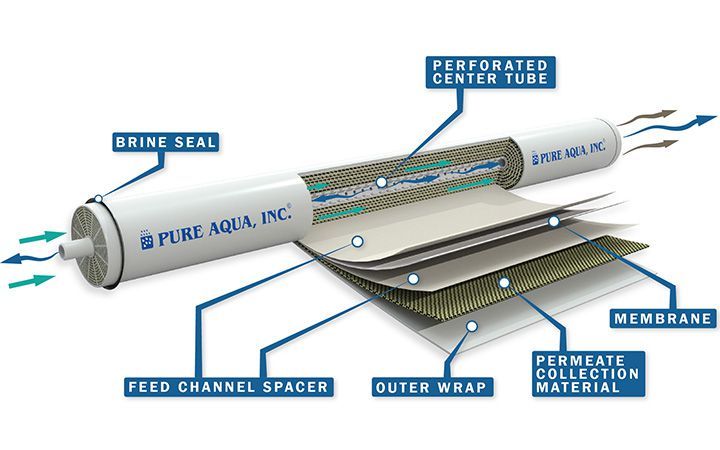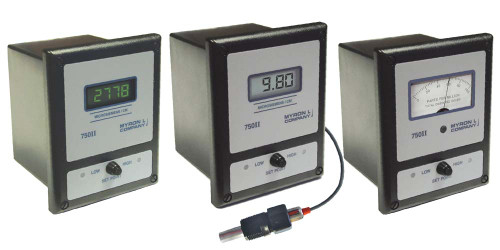What is TDS in Water and What are its Harmful Effects?
TDS, or Total Dissolved Solids, is a measure of the amount of salts or dissolved ions in water. It is the weight of remaining salts after the water has been filtered or evaporated, measured in mg/l, which is equivalent to ppm or parts per million. The lower the level of TDS, the purer your water is. Salt is composed of ionic compounds, both positive and negative ions creating a neutral product (no net charge). As a rough rule, multiplying the conductivity by 0.65 is approximately equal to the TDS. Conductivity measures a current passed through the water, the higher the TDS or ions in the water, the more conductive. TDS varies from 50-45,000 ppm, depending on the water source. Standard seawater is around 36,000 ppm, depending on the region. Higher TDS levels of around 45,000 ppm are seen in the Persian Gulf. As a rule of thumb, 10 PSI per 1,000 ppm of TDS contributes 10 PSI of osmotic pressure. Therefore, the higher the TDS water level, the higher pressure required to overcome the osmotic pressure, hence the name reverse osmosis.
The reverse osmosis (RO) process works by pushing water through a semipermeable membrane under pressure to remove the contaminants. Some contaminants treated by reverse osmosis include chloride, colloids, fluoride, organics, particles, pyrogens, and sodium.
[custom-specifications]
How can I lower the TDS level in my water?
It is important to frequently test water for TDS. In order to find out your level of total dissolved solids, the first step is to have your water tested by a local water treatment laboratory. Once your water TDS level has been determined, a Pure Aqua representative can help you to determine your treatment options. This will be a vital step to take since high levels of total dissolved solids in water can have an impact on human health, aquariums, pools/spas, etc.
Are Low TDS Water Levels harmful?
If the water TDS level is too low the water can have a flat taste and water with high levels of TDS could have a bitter, metallic, or salty taste or may carry chloramines, chlorine, etc.
[/custom-specifications]
[custom-features]
There are a few treatment options to reduce total dissolved solids in water, such as reverse osmosis system, water filters, and softeners. Reverse osmosis is considered to be one of the best available solutions to reduce the water tds level and to meet many treated water quality requirements. Reverse Osmosis removes dissolved ions (salts), where rejection is 99%+ depending on the membrane and specific ions. The WHO guideline for drinking water is 500 ppm.
Pure Aqua specializes in reverse osmosis and nanofiltration technology. Learn more about Pure Aqua’s standard line of packaged RO equipment.
[/custom-features]
[custom-usage]
One major advantage of reducing or treating the TDS level is that it will influence the taste in drinking water. The goal is to have a moderate level of total dissolved solids to give drinking water a pleasant taste as well as to eliminate harmful chemicals. Once an adequate water TDS level has been reached, the treated water can be used for a wide range of applications.
[/custom-usage]
-
They exceeded our expectation
We have specified a system that will ensure effective tds reduction. They were able to meet our expectations
- Related Project1:
- https://pureaqua.com/brackish-ro-machines-15x1000-3x9000-3x30000-gpd-iraq/
- Related Project2:
- https://pureaqua.com/industrial-reverse-osmosis-machine-for-hotel-tds-reduction-480-m3-day-oman/
- Related Project3:
- https://pureaqua.com/commercial-reverse-osmosis-system-to-lower-tds-usa/
- Related Project4:
- https://pureaqua.com/industrial-reverse-osmosis-units-for-resort-2x-95000-gpd-guinea/
 ENGLISH arrow_drop_down
ENGLISH arrow_drop_down
 ESPAÑOL
ESPAÑOL ???????
??????? PORTUGUÉS
PORTUGUÉS FRANÇAIS
FRANÇAIS










